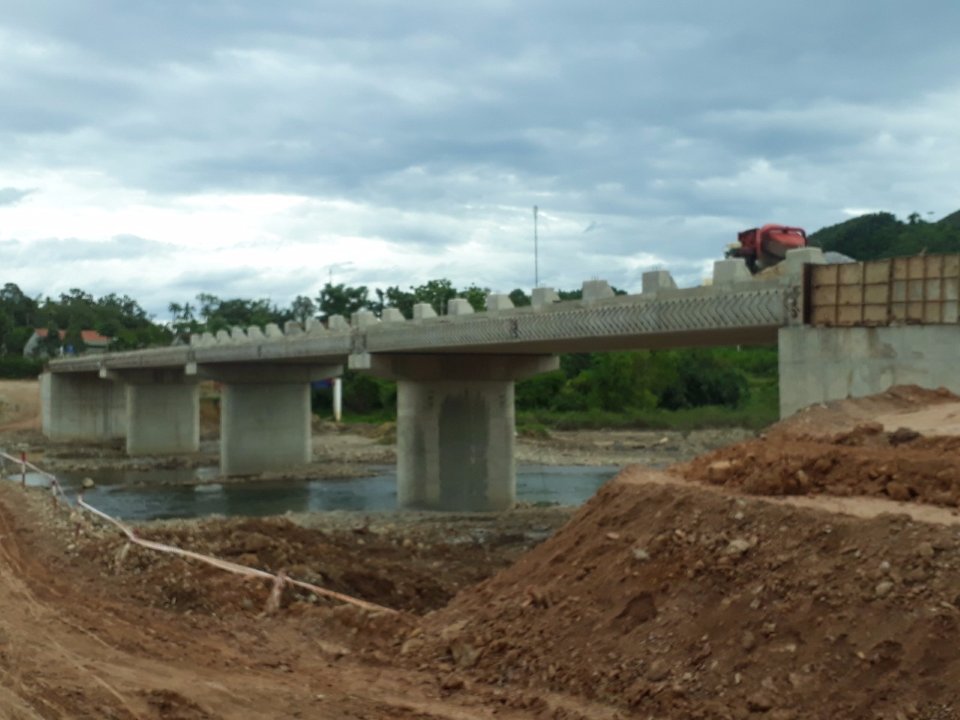Circular 11: Requirements on adjusting the sag of main cable in Vietnam
Recently, the Ministry of Transport of Vietnam issued Circular 11/2014/TT-BGTVT providing guidelines for the design, construction, and acceptance of pedestrian suspension bridges. This Circular guides the requirements on adjusting the sag of the main cable during the construction process.

Circular 11: Requirements on adjusting the sag of the main cable in Vietnam (Illustrative Image)
Specifically, Circular 11/2014/TT-BGTVT guides the requirements on adjusting the sag of the main cable during the construction process of spreading and tensioning the cables of pedestrian suspension bridges in Vietnam. The detailed guidelines are as follows:
General requirements:
- Sag adjustment should only be carried out when the temperature is stable;
- When the main cable consists of several strands, one strand should be adjusted first as the standard strand. The calculated absolute elevation of the standard strand is determined corresponding to the ambient temperature and the cable temperature being 25°C. At the time of measurement and adjustment of the sag, the absolute elevation of the standard strand will be recalculated based on the actual ambient and cable temperatures;
- If the bridge has only one main cable strand, this is considered the standard strand for adjustment.
Technical requirements on elevation when Adjusting the sag of cable strands: The elevation difference between the two standard cable strands upstream and downstream should be ±10 mm. For other cable strands (compared to the standard strand), the values will be -5 mm and +10 mm.
Installation of cable clamps (cable clips) and suspension cables:
- Before installing the cable clamps, the specific position of each clamp on the main cable bundle must be determined, and marking numbers must be recorded. The oil stains and dust on the surface of the main cable bundle must be cleaned, and it must be painted with anti-rust paint.
- During transportation and installation, the cable clamps must be protected from damage.
- The method of installing the cable clamps will be specified in the contractor's technological procedure based on available installation equipment and experience.
- Once the cable clamps are accurately positioned on the main cable, the bolts of the cable clamps should be tightened. The bolt tightening on the cable clamps will be conducted in three stages. Immediately after installing the cable clamps, proceed with stage 1 tightening each bolt with the corresponding force specified in the design.
- When hanging and installing the main girder, tighten the bolts to stage 2. After constructing the bridge deck and completing cable protection, tighten all bolts to stage 3 to achieve the design tightening force. To check the bolt force during tightening, the bolt tightening equipment must have the function to convert the tightening torque into the tensile force in the bolt.
Details can be found in Circular 11/2014/TT-BGTVT effective from June 15, 2014.
Ty Na
- Number of deputy directors of departments in Vietnam in accordance with Decree 45/2025/ND-CP
- Cases ineligible for pardon in Vietnam in 2025
- Decree 50/2025 amending Decree 151/2017 on the management of public assets in Vietnam
- Circular 07/2025 amending Circular 02/2022 on the Law on Environmental Protection in Vietnam
- Adjustment to the organizational structure of the Ministry of Health of Vietnam: Certain agencies are no longer listed in the organizational structure
- Vietnam aims to welcome 22-23 million international tourists in Vietnam in 2025
-

- Number of deputy directors of departments in Vietnam ...
- 15:04, 05/03/2025
-

- Cases ineligible for pardon in Vietnam in 2025
- 14:43, 05/03/2025
-

- Decree 50/2025 amending Decree 151/2017 on the ...
- 12:00, 05/03/2025
-

- Circular 07/2025 amending Circular 02/2022 on ...
- 11:30, 05/03/2025
-

- Adjustment to the organizational structure of ...
- 10:34, 05/03/2025
-

- Notable new policies of Vietnam effective as of ...
- 16:26, 11/04/2025
-
.Medium.png)
- Notable documents of Vietnam in the previous week ...
- 16:21, 11/04/2025
-
.Medium.png)
- Notable documents of Vietnam in the previous week ...
- 16:11, 02/04/2025
-
.Medium.png)
- Notable new policies of Vietnam to be effective ...
- 16:04, 02/04/2025
-
.Medium.png)
- Notable new policies of Vietnam effective from ...
- 14:51, 21/03/2025
 Article table of contents
Article table of contents
